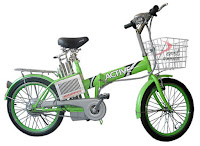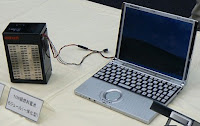
Showing posts with label cell. Show all posts
Showing posts with label cell. Show all posts

 A sliced Carrot looks like the human eye. The pupil, iris and radiating lines look just like the human eye...and YES science now shows that carrots greatly enhance blood flow to and function of the eyes.
A sliced Carrot looks like the human eye. The pupil, iris and radiating lines look just like the human eye...and YES science now shows that carrots greatly enhance blood flow to and function of the eyes. A Tomato has four chambers and is red. The heart is red and has four chambers. All of the research shows tomatoes are indeed pure heart and blood food.
A Tomato has four chambers and is red. The heart is red and has four chambers. All of the research shows tomatoes are indeed pure heart and blood food.  Grapes hang in a cluster that has the shape of the heart. Each grape looks like a blood cell and all of the research today shows that grapes are also profound heart and blood vitalizing food.
Grapes hang in a cluster that has the shape of the heart. Each grape looks like a blood cell and all of the research today shows that grapes are also profound heart and blood vitalizing food.  A Walnut looks like a little brain, a left and right hemisphere, upper cerebrums and lower cerebellums. Even the wrinkles or folds are on the nut just like the neocortex. We now know that walnuts help develop over 3 dozen neuron-transmitters for brain function.
A Walnut looks like a little brain, a left and right hemisphere, upper cerebrums and lower cerebellums. Even the wrinkles or folds are on the nut just like the neocortex. We now know that walnuts help develop over 3 dozen neuron-transmitters for brain function.  Kidney Beans actually heal and help maintain kidney function and yes, they look exactly like the human kidneys.
Kidney Beans actually heal and help maintain kidney function and yes, they look exactly like the human kidneys. Celery, Bok Choy, Rhubarb and more look just like bones. These foods specifically target bone strength. Bones are 23% sodium and these foods are 23% sodium. If you don't have enough sodium in your diet the body pulls it from the bones, making them weak. These foods replenish the skeletal needs of the body.
Celery, Bok Choy, Rhubarb and more look just like bones. These foods specifically target bone strength. Bones are 23% sodium and these foods are 23% sodium. If you don't have enough sodium in your diet the body pulls it from the bones, making them weak. These foods replenish the skeletal needs of the body.  Eggplant, Avocadoes and Pears target the health and function of the womb and cervix of the female - they look just! like these organs. Today's research shows that when a woman eats 1 avocado a week, it balances hormones, sheds unwanted birth weight and prevents cervical cancers. And how profound is this? .... It takes exactly 9 months to grow an avocado from blossom to ripened fruit. There are over 14,000 photolytic chemical constituents of nutrition in each one of these foods (modern science has only studied and named about 141 of them).
Eggplant, Avocadoes and Pears target the health and function of the womb and cervix of the female - they look just! like these organs. Today's research shows that when a woman eats 1 avocado a week, it balances hormones, sheds unwanted birth weight and prevents cervical cancers. And how profound is this? .... It takes exactly 9 months to grow an avocado from blossom to ripened fruit. There are over 14,000 photolytic chemical constituents of nutrition in each one of these foods (modern science has only studied and named about 141 of them).  Figs are full of seeds and hang in twos when they grow. Figs increase the motility of male sperm and increase the numbers of Sperm as well to overcome male sterilit y, and guess what they resemble?.
Figs are full of seeds and hang in twos when they grow. Figs increase the motility of male sperm and increase the numbers of Sperm as well to overcome male sterilit y, and guess what they resemble?.  Sweet Potatoes look like the pancreas and actually balance the glycemic index of diabetics.
Sweet Potatoes look like the pancreas and actually balance the glycemic index of diabetics. Olives assist the health and function of the ovaries
Olives assist the health and function of the ovaries  Grapefruits, Oranges, and O there Citrus fruits look just like the mammary glands of the female and actually assist the health of the breasts and the movement of lymph in and out of the breasts.
Grapefruits, Oranges, and O there Citrus fruits look just like the mammary glands of the female and actually assist the health of the breasts and the movement of lymph in and out of the breasts.  Onions look like body cells. Today's research shows that onions help clear waste materials from all of the body cells They even produce tears which wash the epithelial layers of the eyes
Onions look like body cells. Today's research shows that onions help clear waste materials from all of the body cells They even produce tears which wash the epithelial layers of the eyes BMW Hydrogen 7
BMW Hydrogen 7 Hydrogen Fuel Cell Bicycles
Hydrogen Fuel Cell Bicycles Portable fuel cell powered by water and aluminum
Portable fuel cell powered by water and aluminum Membrane Fuel Cells
Membrane Fuel Cells Toshiba,
Toshiba,